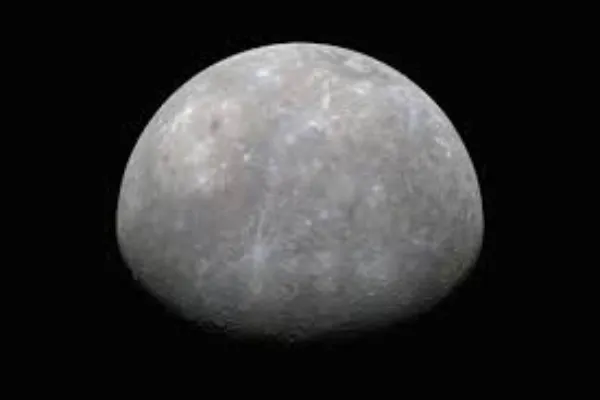10 Facts About Mercury the Swift Planet
A Cosmic Enigma in 10 Facts About Mercury
Mercury, the smallest and innermost planet in our solar system, holds a unique charm and a host of captivating characteristics. From its proximity to the Sun to its peculiar rotation, here are 10 facts about Mercury that shed light on the enigmatic nature of the planet.
1. The Swiftest Orbit: Mercury is the speedster of our solar system, hurtling around the Sun at an average orbital speed of about 107,000 miles per hour (172,000 kilometers per hour). Its rapid orbit contributes to its reputation as the fastest planet in our celestial neighborhood.
2. Extremes of Temperature: As the closest planet to the Sun, Mercury experiences extreme temperature fluctuations. Daytime temperatures on its sunlit side can soar to a scorching 800 degrees Fahrenheit (427 degrees Celsius), while on the dark side facing away from the Sun, temperatures plummet to a chilling -290 degrees Fahrenheit (-179 degrees Celsius).
3. Unusual Rotation: Mercury’s rotation is peculiar; it exhibits a 3:2 spin-orbit resonance. This means it rotates three times on its axis for every two orbits around the Sun. This unique rotation pattern contributes to long and hot days and extremely cold nights on the planet’s surface.
4. Rocky Terrain: Mercury boasts a rocky and cratered surface, resembling Earth’s Moon. Its landscape is scarred by impact craters, created by collisions with asteroids and comets over billions of years. The Caloris Basin, one of the largest impact basins in the solar system, is a prominent feature on Mercury’s surface.
5. Lack of Atmosphere: Unlike Earth, Mercury has a very thin and virtually nonexistent atmosphere. This lack of a substantial atmosphere means that the planet cannot retain heat, contributing to its extreme temperature variations between day and night.
6. Scarce Moons: Mercury is one of the two planets in our solar system (along with Venus) that has no natural moons. The absence of moons distinguishes it from other planets like Earth and Mars, which host one or more natural satellites.
7. Intriguing Magnetic Field: Despite its small size, Mercury possesses a surprisingly strong magnetic field. This magnetic field is thought to be generated by the planet’s partially molten iron-nickel core, creating a complex interplay with the solar wind.
8. Messenger’s Insights: NASA’s Messenger spacecraft provided valuable insights into Mercury’s composition and geology during its mission, which concluded in 2015. Messenger’s findings included evidence of water ice in the permanently shadowed regions near Mercury’s poles.
9. Transit of Mercury: Mercury occasionally crosses directly between the Earth and the Sun, a phenomenon known as a transit of Mercury. During these transits, observers on Earth can witness Mercury as a small, dark dot moving across the solar disk.
10. The Elusive View: Observing Mercury from Earth can be challenging due to its proximity to the Sun. It is most visible during its greatest elongation, the point in its orbit where it appears farthest from the Sun in the sky, either shortly after sunset or before sunrise.
Navigating the Swift Currents of the Solar System’s Innermost Planet Through 10 Facts About Mercury

Mercury, the smallest and innermost planet in our solar system, unveils a host of captivating facts that set it apart in the cosmic tapestry. Proximity to the Sun makes Mercury the swiftest traveler in our celestial neighborhood, hurtling around the Sun at an average speed of 107,000 miles per hour (172,000 kilometers per hour).
This rapid orbit contributes to its stark temperature extremes, with daytime temperatures soaring to a blistering 800 degrees Fahrenheit (427 degrees Celsius), while nighttime temperatures plummet to a bone-chilling -290 degrees Fahrenheit (-179 degrees Celsius). This stark temperature contrast is a consequence of Mercury’s lack of a substantial atmosphere, which prevents the retention of heat and contributes to its lunar-like, rocky terrain marked by impact craters, including the expansive Caloris Basin.
Mercury’s rotation is a celestial puzzle, exhibiting a peculiar 3:2 spin-orbit resonance. This means that it completes three rotations on its axis for every two orbits around the Sun. Consequently, a day on Mercury lasts about 176 Earth days, while a year, or one orbit around the Sun, is approximately 88 Earth days.
The absence of a thick atmosphere allows Mercury’s surface to cool rapidly during its long nights, showcasing the extremes of temperature that define this swift planet. While Mercury’s lack of moons distinguishes it from other planets in our solar system, its intriguing magnetic field and the occasional transit across the solar disk provide astronomers with valuable opportunities to explore the mysteries of this enigmatic world.
Mercury’s compact size and intriguing characteristics continue to captivate astronomers and space enthusiasts alike. As we explore the 10 facts about Mercury, each discovery adds to our understanding of the diverse and dynamic nature of the solar system.